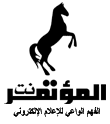Project Syndicate - Once again, Nicaragua faces a possible Sandinista restoration. The country votes on November 5 in an unprecedented presidential election with four competitive candidates, and the question on everyone�s lips is whether Sandinista leader Daniel Ortega, who lost by more than 10% in each of the last three presidential votes, will succeed in regaining power this time.
Nicaragua�s politics are polarized between a Sandinista minority and a majority that is clearly anti-Sandinista, yet Ortega has a real chance of winning. How is this so?
Despite conspicuous efforts by the Bush administration to unify Nicaragua�s right, the anti-Sandinista forces are divided. The traditional wing, the Constitutional Liberal Party (PLC), controlled by former President Arnoldo Alemán, who is under house arrest since being convicted of corruption, has Jos� Rizo as its candidate. The moderate wing, the Nicaraguan Liberal Alliance (ALN), is led by banker Eduardo Montealegre, with huge support from the private sector and the Bush administration.
But the FSLN (the Sandinista National Liberation Front), too, has suffered a major rupture, with the emergence of a new option on the democratic left in the form of a breakaway Sandinista faction that has managed to win the support of independent voters. Its candidate, the economist Edmundo Jarquín, is a former expert on governance issues at the Inter-American Development Bank.
A backroom deal reached between Alemán and Ortega in 2000, intended to carve up power between the two men, established a 40% threshold for a candidate to win the presidency in the first round. In addition, and in exchange for personal benefits, then President Alemán promulgated a rule that looks tailored-made to suit Ortega: candidates can win on the first round with only 35% of votes if there is a 5% difference between the leading contender and the runner-up.
The emerging forces represented by Montealegre and Jarquín agree on the need for political reform to undo that Ortega/Alemán pact, which has politicized the judiciary, the national accounts, and the electoral system. Concerning economic policy, they differ on the degree of continuity or change that should be pursued, and over recent reforms that have produced moderate economic growth but with no improvement whatsoever in the living conditions of the 50% of the population who live in poverty.
Paradoxically, Ortega enters the final stages of the campaign with about 33% of the vote, far below his historical high of 42%. Yet he may just win due to the divided opposition.
In a parody of John Lennon�s song �Give Peace a Chance,� Ortega barnstorms the country in the manner of a religious preacher, offering �peace, jobs, and reconciliation.� He condemns wild capitalism, but proposes no systemic change as an alternative. The only new elements in his program are handouts for Venezuela�s populist president, Hugo Chávez, which will also mean political alignment between the two leaders if Ortega wins.
But polls that put Ortega in the lead should be read cautiously, because many voters keep their views hidden. With this warning in mind, three scenarios are possible:
� Ortega cannot win in the first round. As in previous elections, the hidden vote turns massively against him. He then is soundly defeated in a run-off against Montealegre as anti-Ortega voters unite against him. If that happens, Nicaragua would have a president with a strong popular mandate and the possibility of establishing a viable democratic alliance in Congress.
� Ortega wins outright in the first round, fueling economic uncertainty, as investors, savers, and external donors are seriously worried by his past. How long they would worry, of course, depends on his behavior in office. Despite his revolutionary rhetoric, Ortega would have no chance of enacting substantial change, because he would lack a Congressional majority. Even so, the country�s stability, always precarious, would depend on his relations with the US, which have long been poisoned by mutual hostility. Moreover, his victory would mean a new and unconditional ally for Chávez, one with more symbolic than real influence, but economically dependent on Venezuela in a region dominated by the influence of the United States and the Free Trade Agreement of the Americas.
� The electoral result is too close to define a non-controversial winner after the first round. It is feared that the Supreme Electoral Council, strongly dominated by the FSLN and the PLC, may not administer the vote counting impartially. And, even if massive fraud is not foreseeable, selective fraud remains a risk. This poses a huge challenge for international electoral observers � the Organization of American States, the European Union, and the Carter Center � if they are to prevent a situation similar to, or even more serious than, Mexico�s recent post-election impasse.
The only certain result that will come out this election is that a new Congress will emerge, and that it will weaken the Alemán-Ortega pact that has held current President Enrique Bolaños administration hostage. Thus, any new government will have more room for democratic maneuver in a fragmented Congress of four strong electoral blocs.
Nicaragua faces a hugely complex future. But that complexity is much more promising than the current immobility.
Carlos F. Chamorro, a Nicaraguan journalist, is Director of the weekly magazine Confidencial and of the TV show Esta Semana. He is a former Director of the Sandinista newspaper Barricada.
Copyright: Project Syndicate, 2006.
www.project-syndicate.org
|

